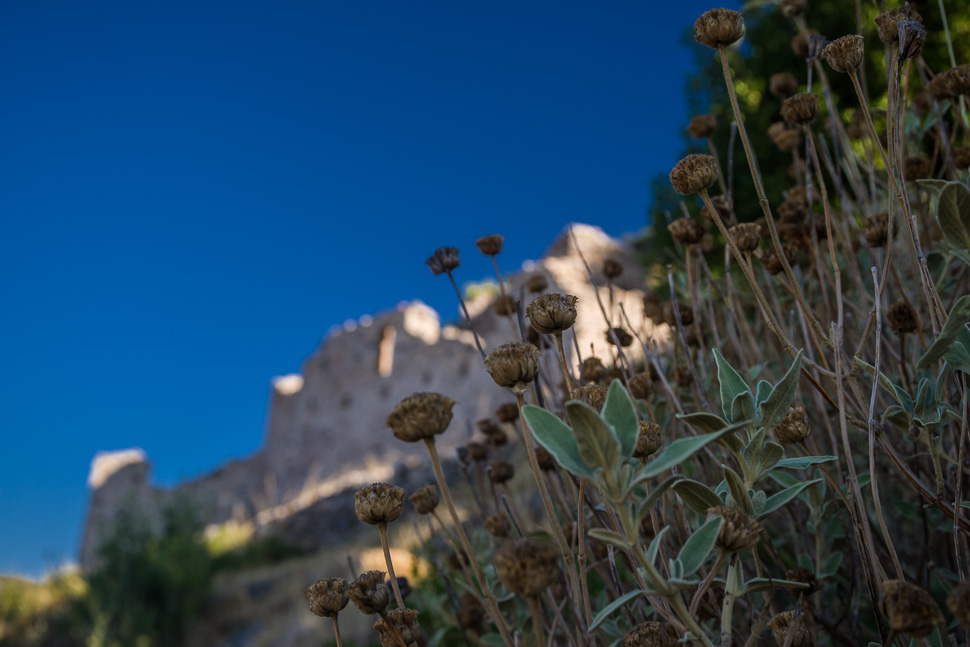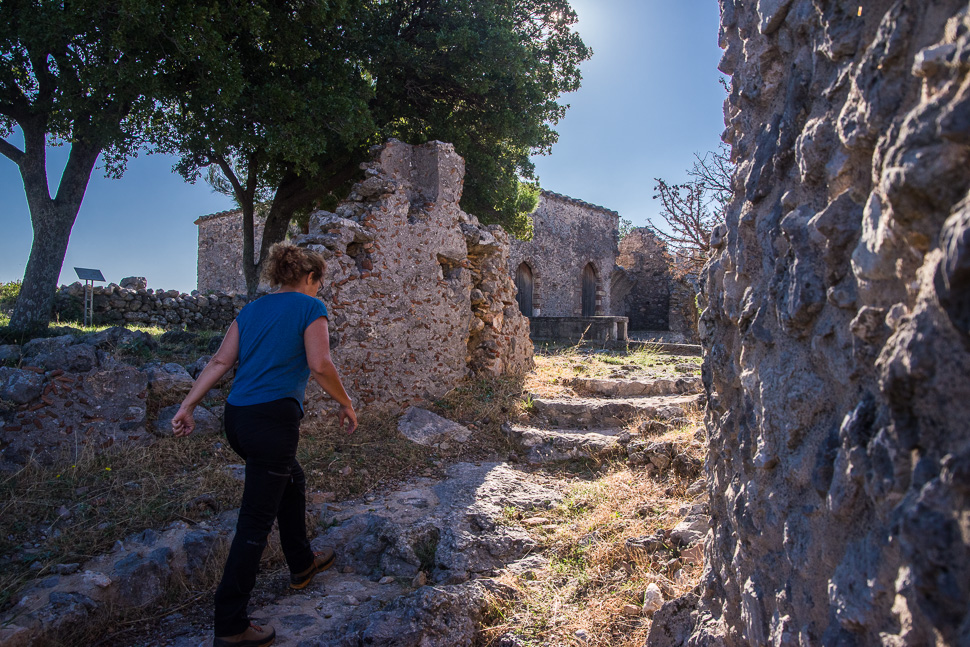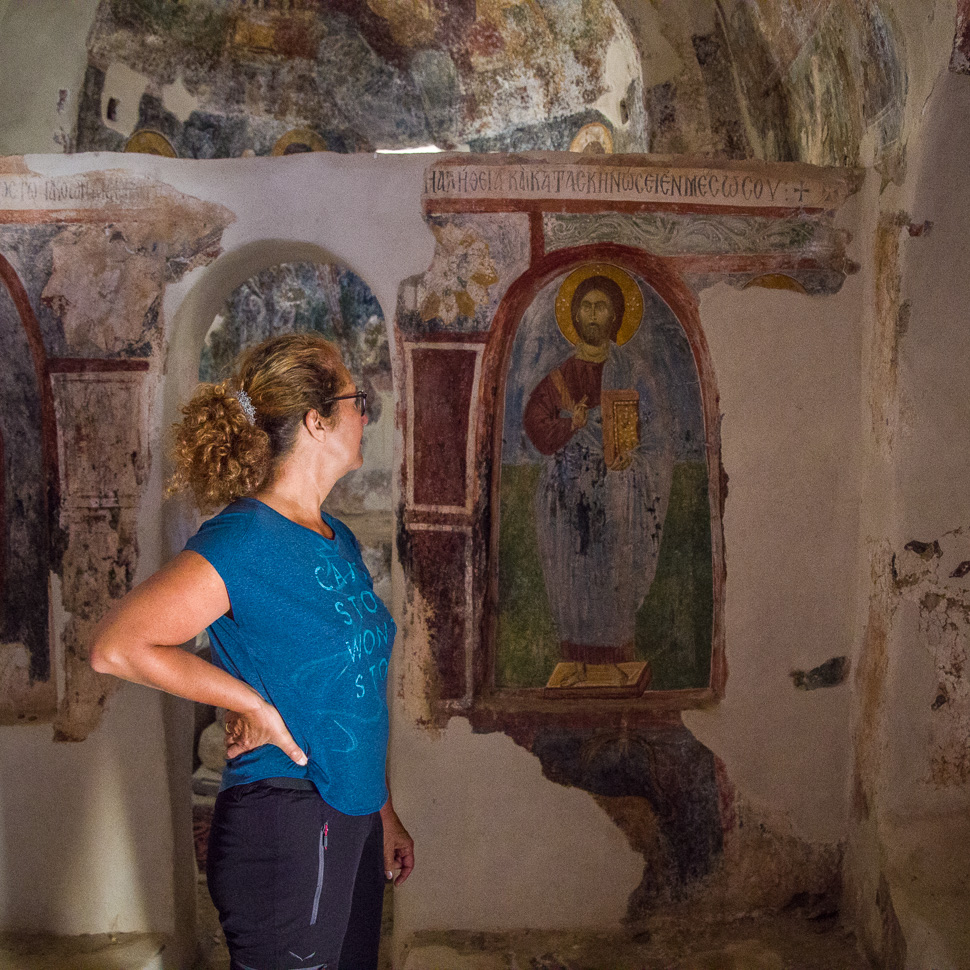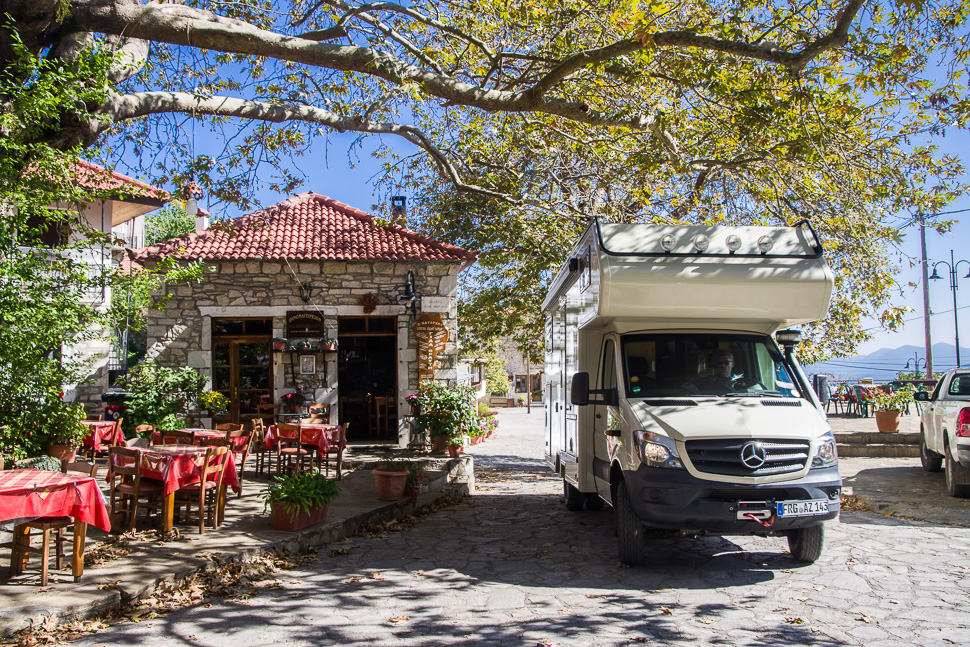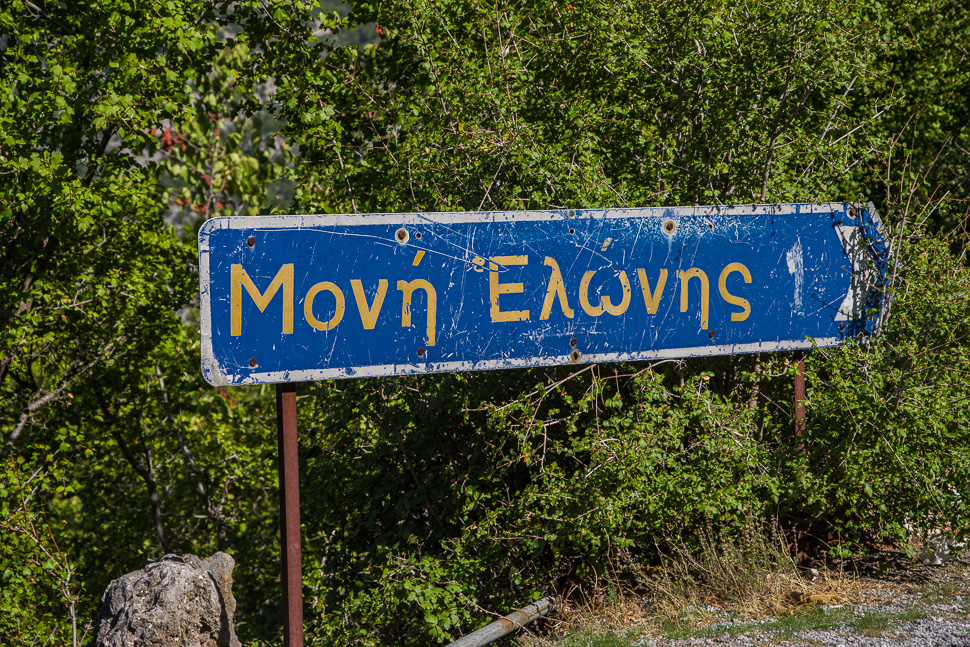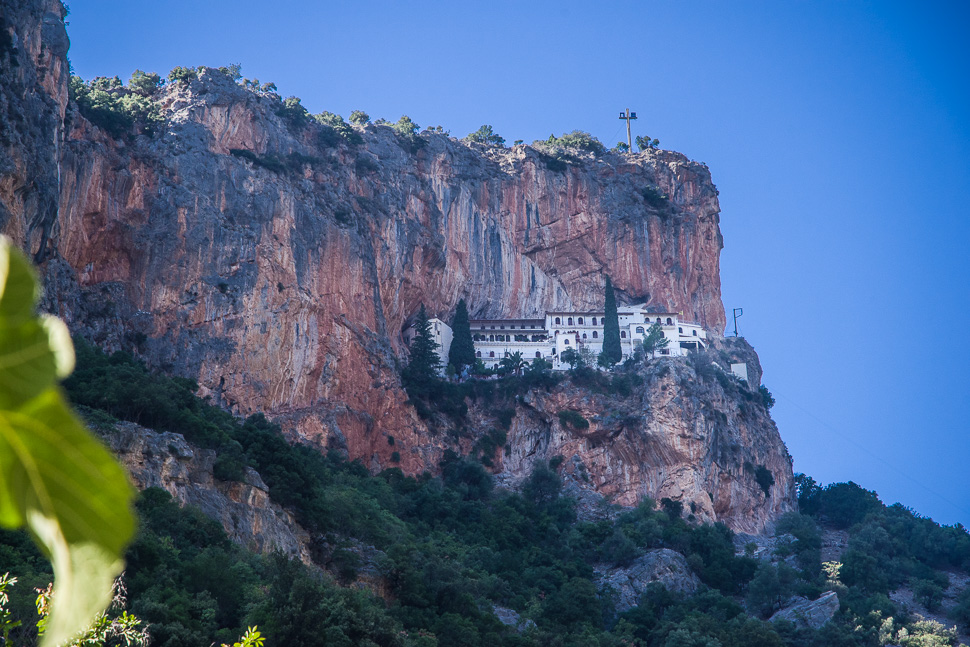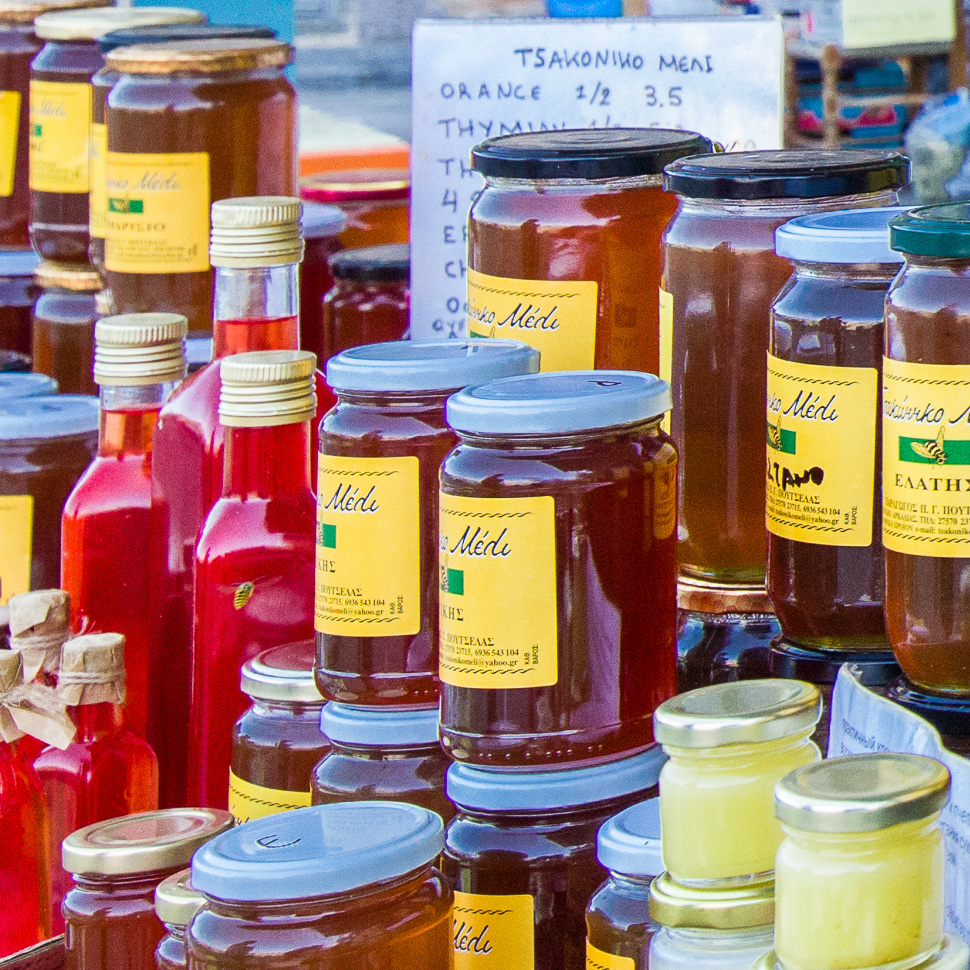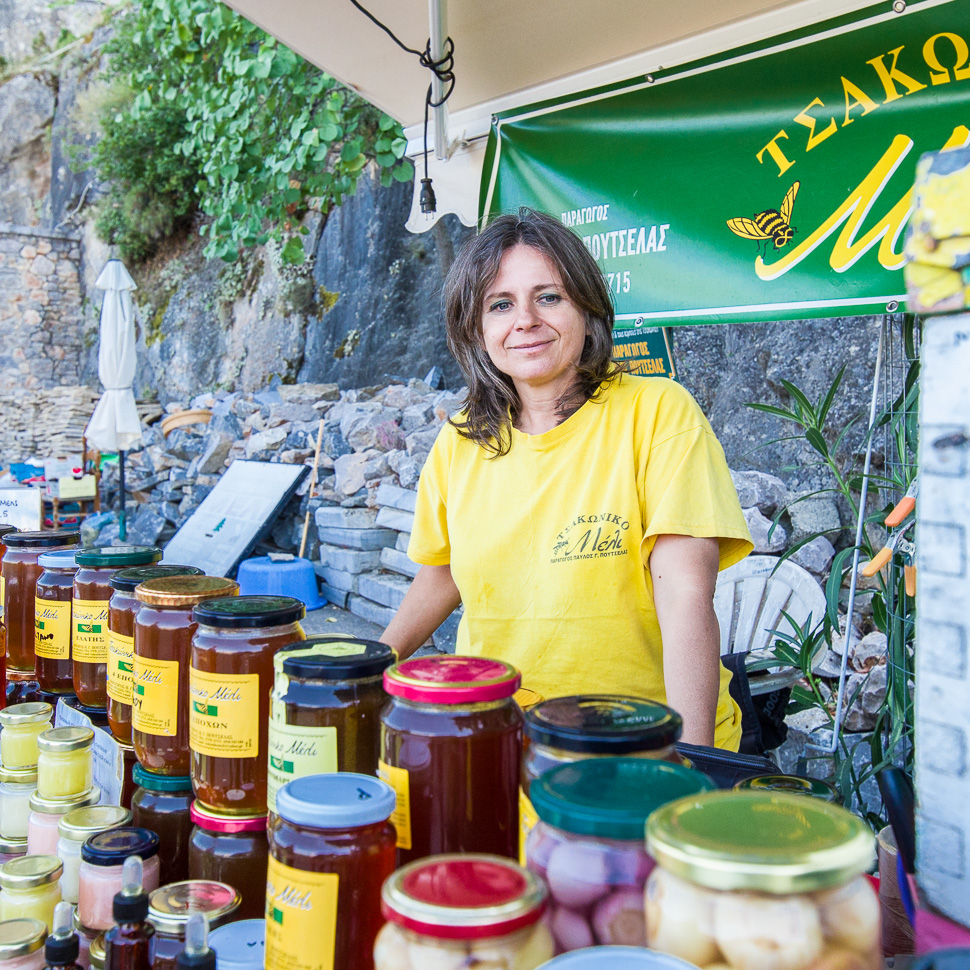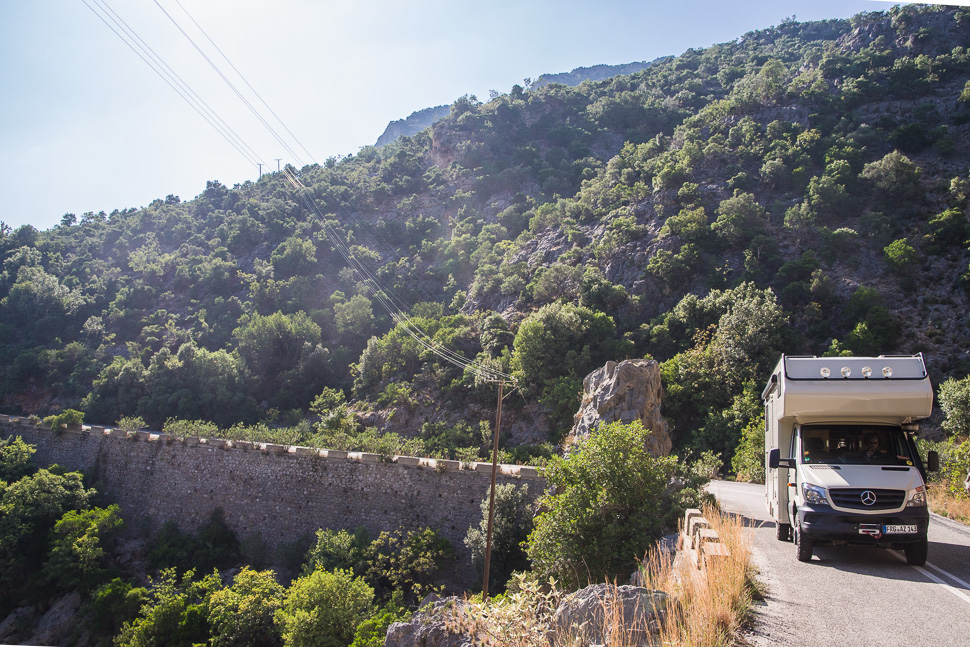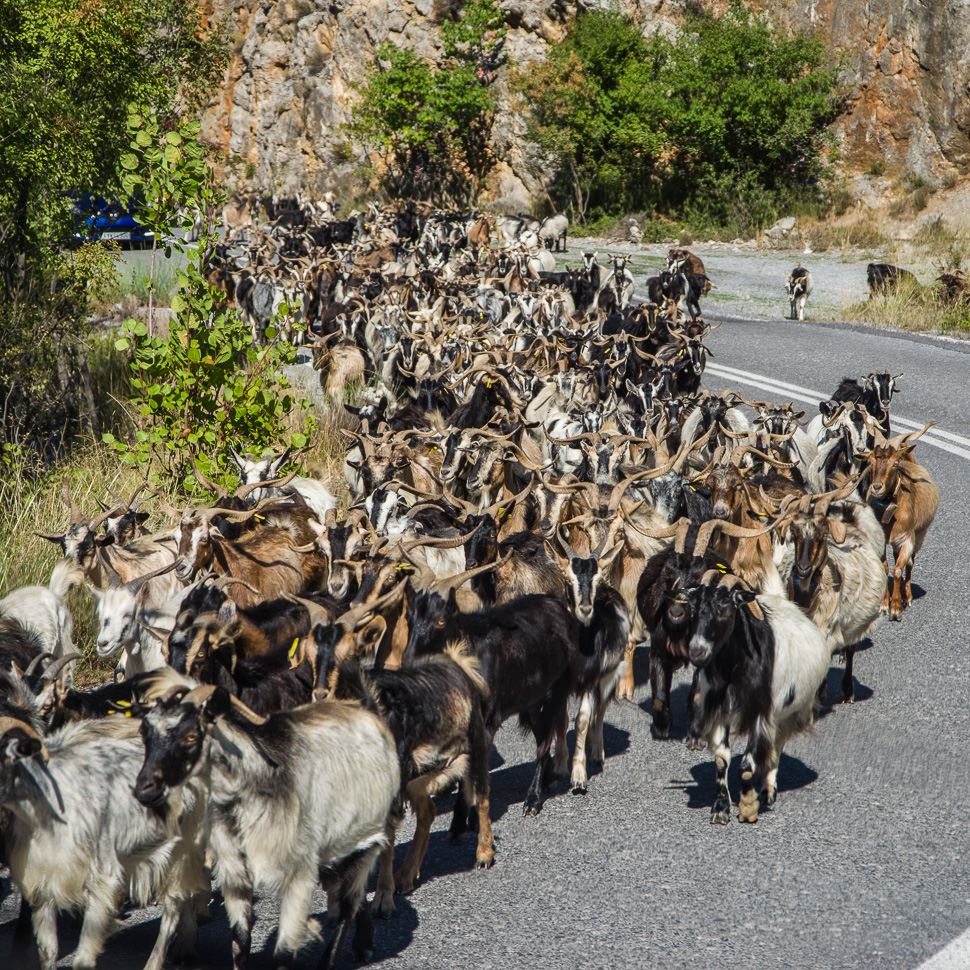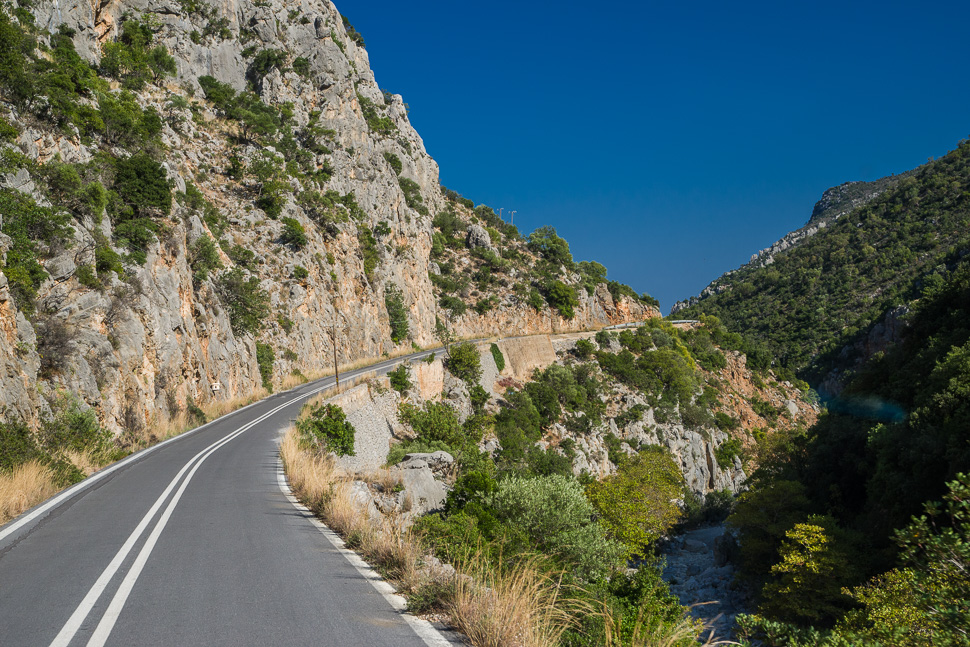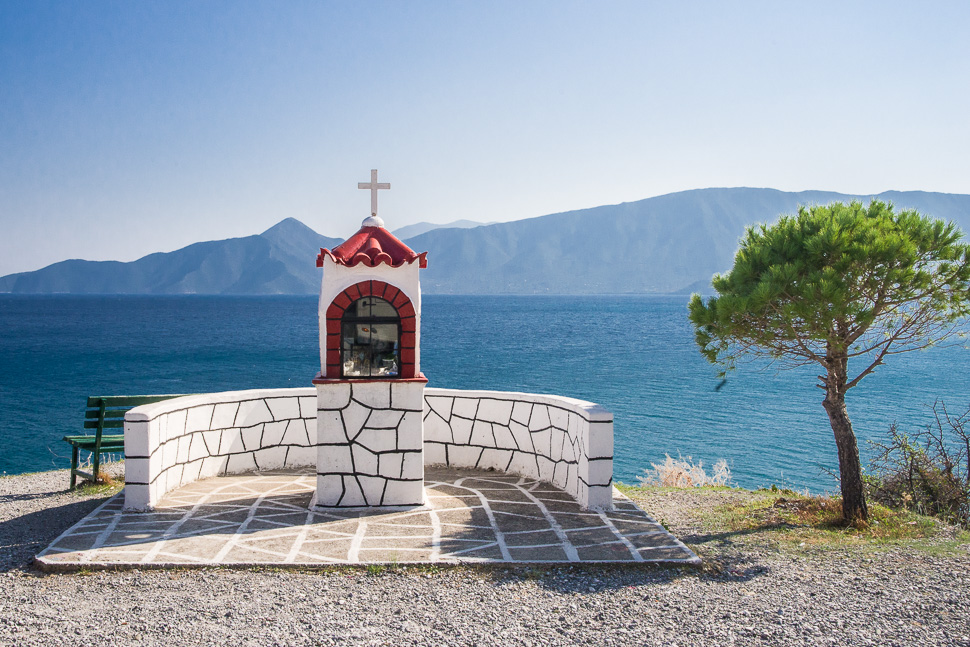We had landed at Geraki by accident while searching for a parking for the night. But the historic castle and city was a great experience. Afterwards we drove through the mountains again and visited the Monastery of Elona in the Defnon valley.
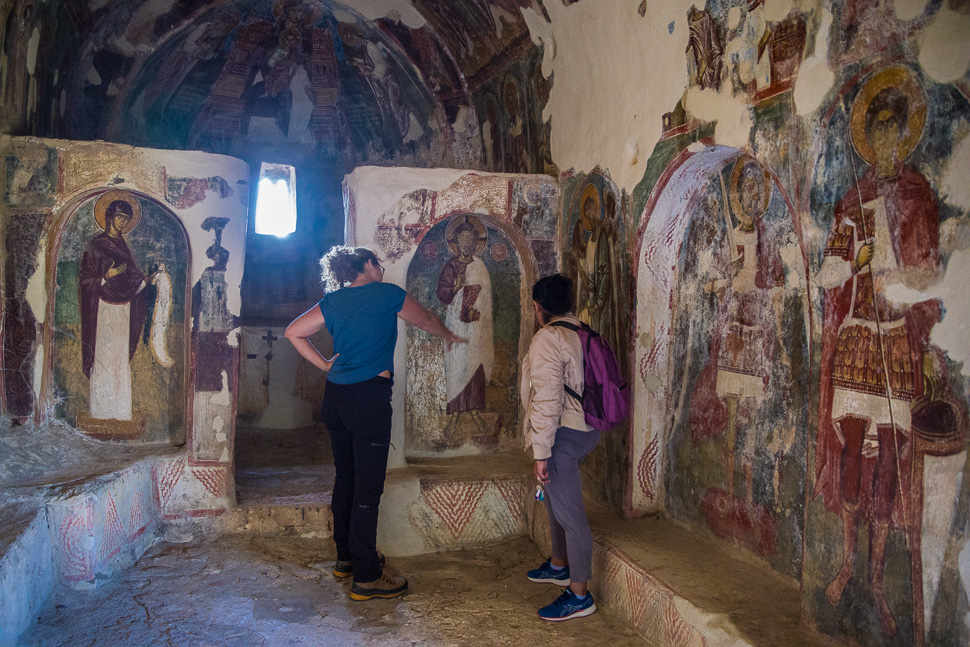 |
| Incredible frescos at Geraki |
We had parked directly at the gate of Geraki castle for the night, which was a bit of a challenge, as the parking was quite uneven. The next morning, the gates were opened and we could visit the archaeological site. The nice lady who was in charge opened the churches for us and gave us some explanation on the frescos.
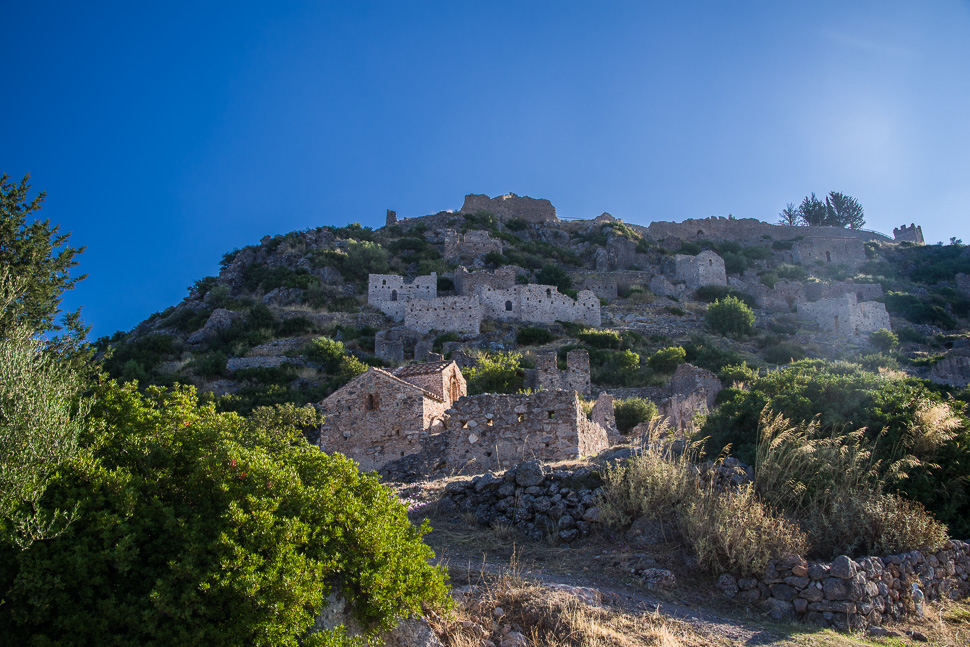 |
| Medieval city of Geraki |
The castle of Geraki was once one of the most important Frankish castles of the Peloponnese, but the remains must have been in bad shape. During the last years it had been slightly renovated and gives now a good impression of how this Frankish castle and town once have looked like. At three churches the frescos had been restored and are very colourful again.
The Barony of Geraki was established 1209, after the conquest of the Peloponnese by the Crusaders. It had six knight’s fiefs attached to it and was given to French Guy of Nivelet, who built the fortress of Geraki.
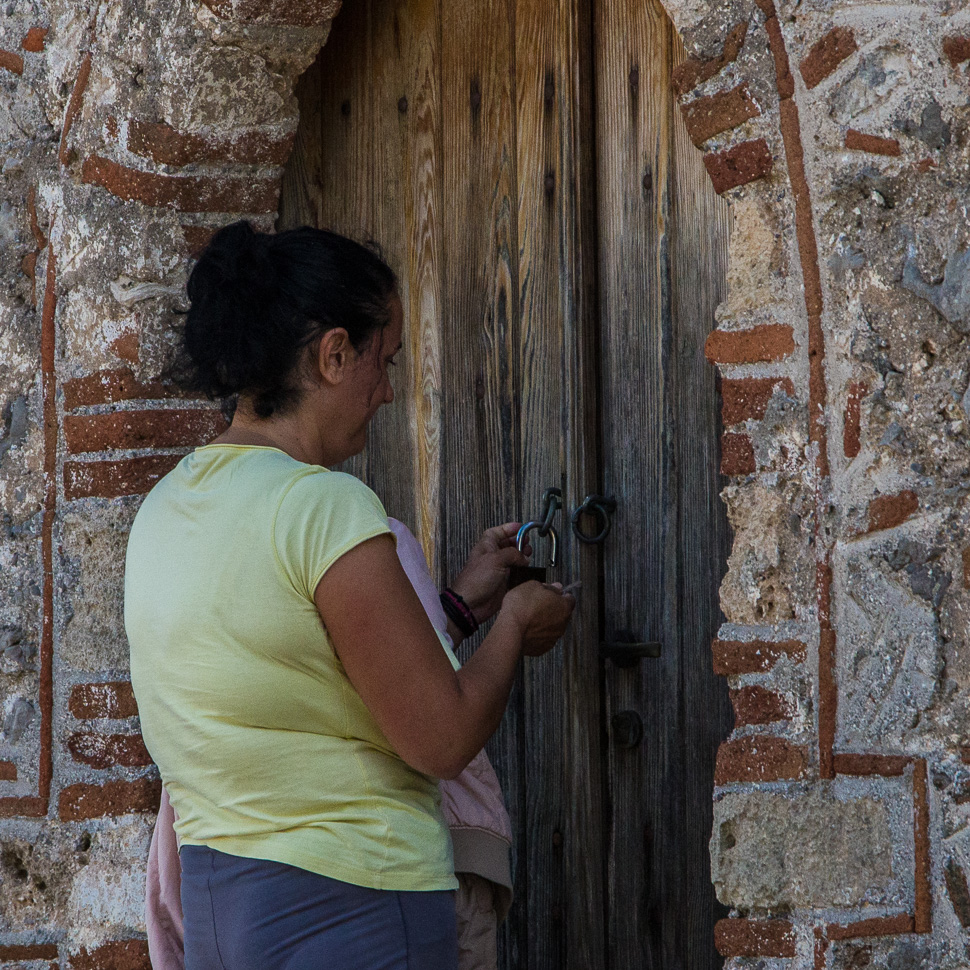 |
| Churches being opened for us |
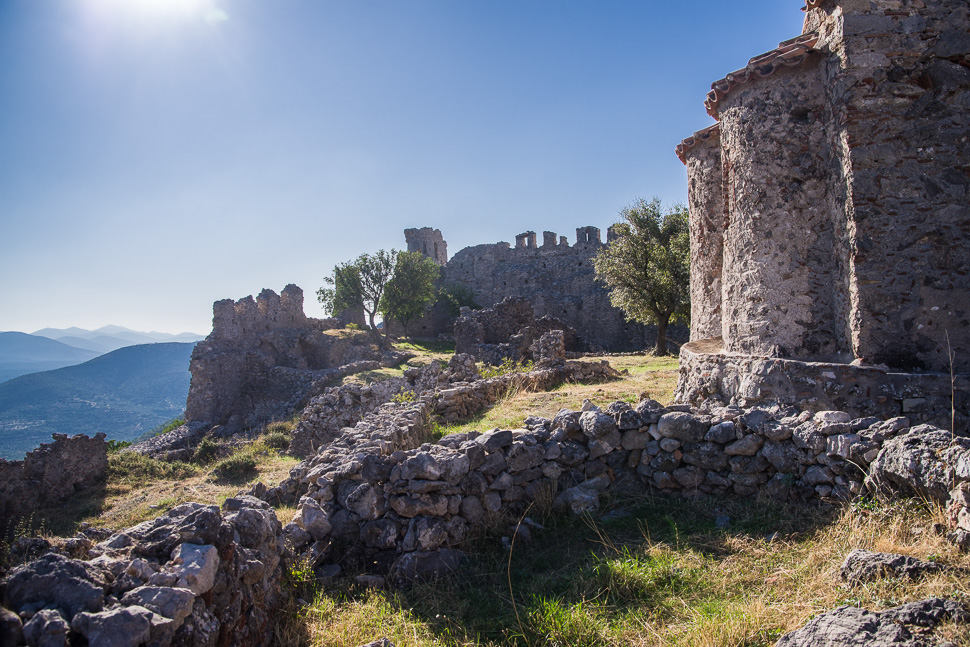 |
| Walls of the castle, overlooking a vast area |
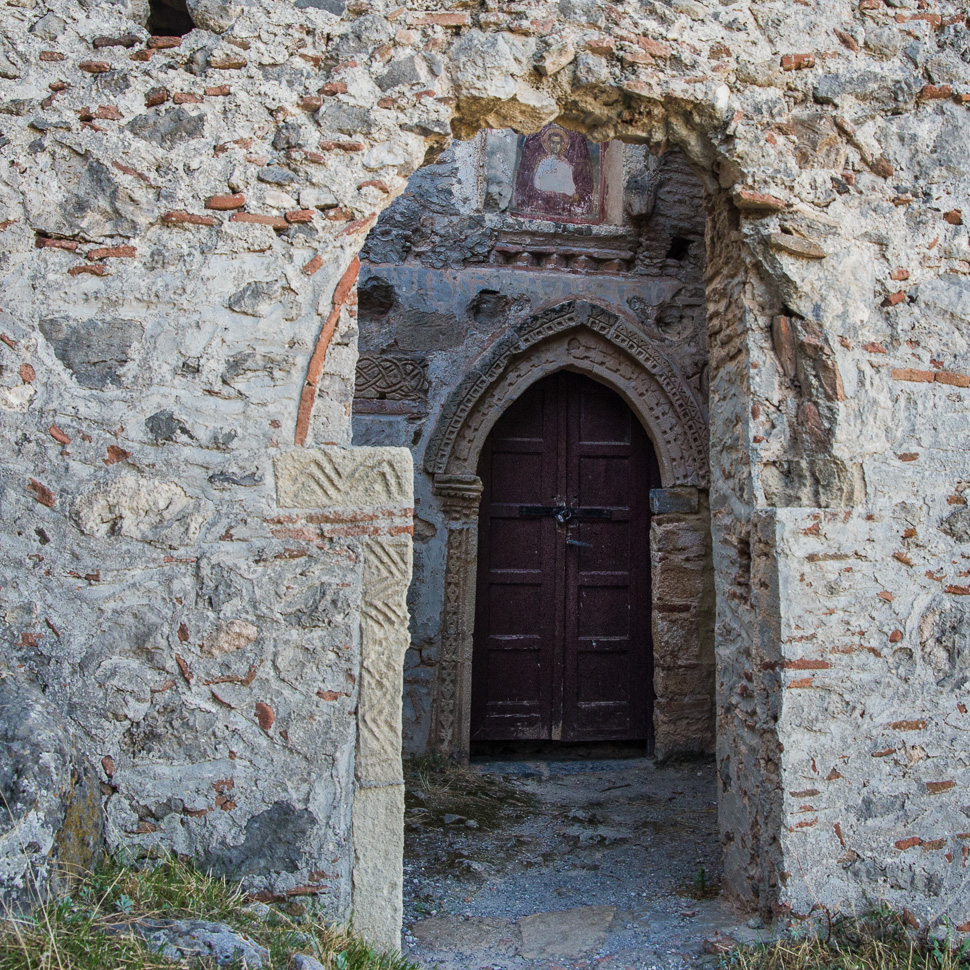 |
| Beautiful entrance to one of the churches |
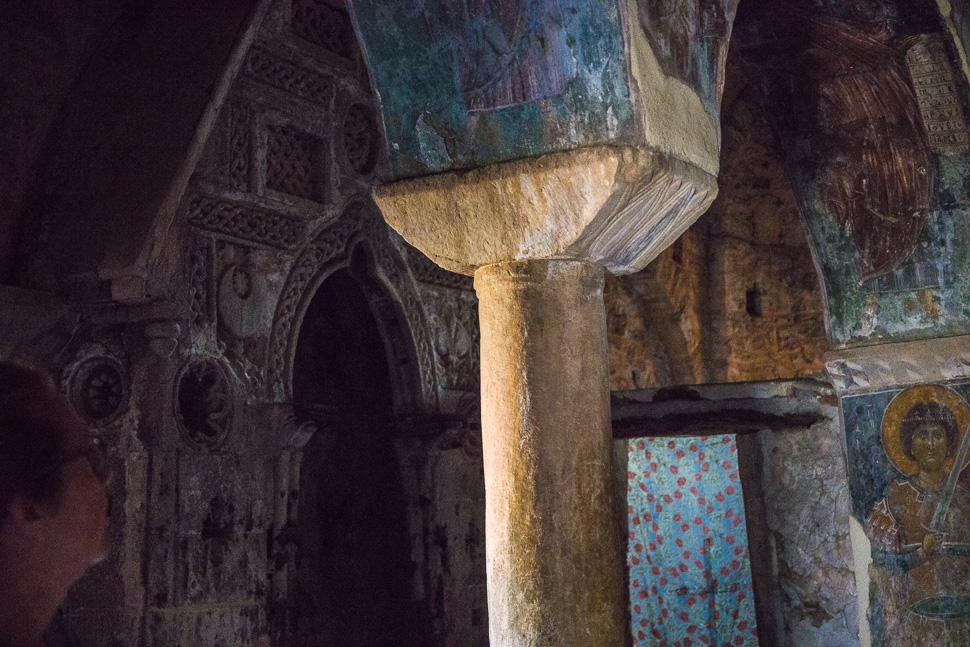 |
| Column at the medieval church |
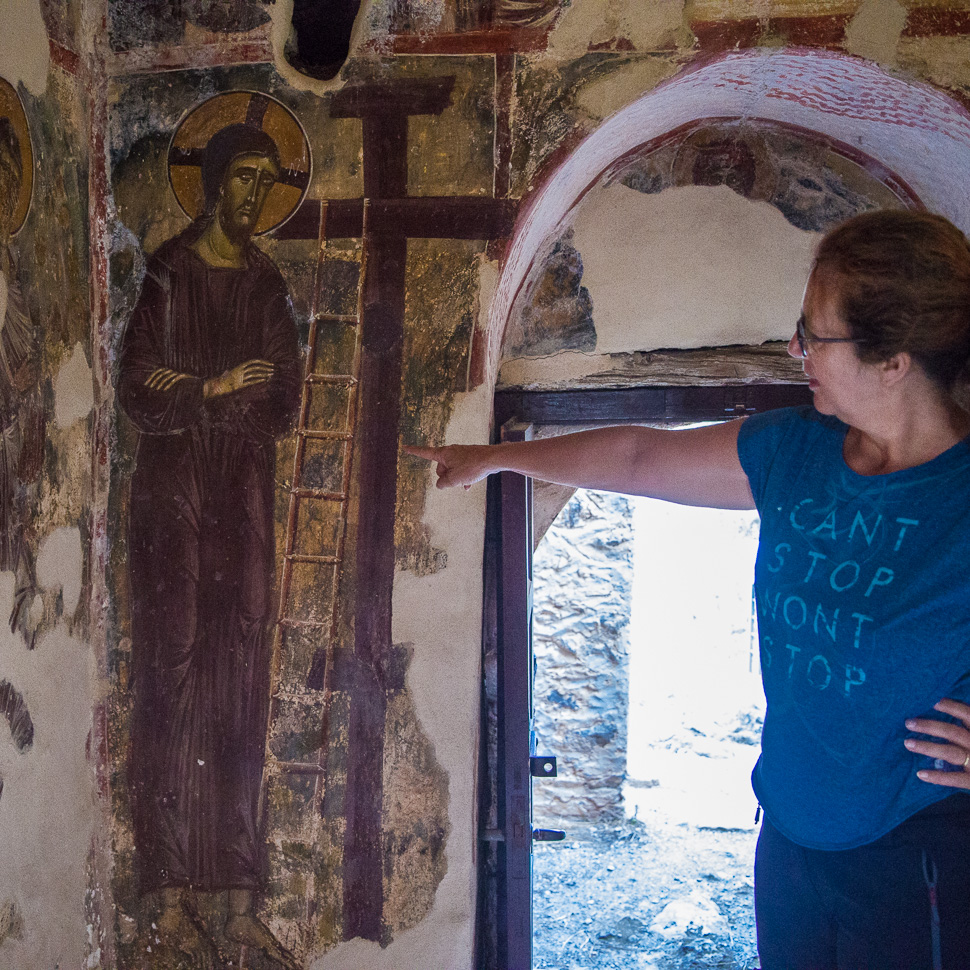 |
| Restored fresco showing Jesus in front of the cross |
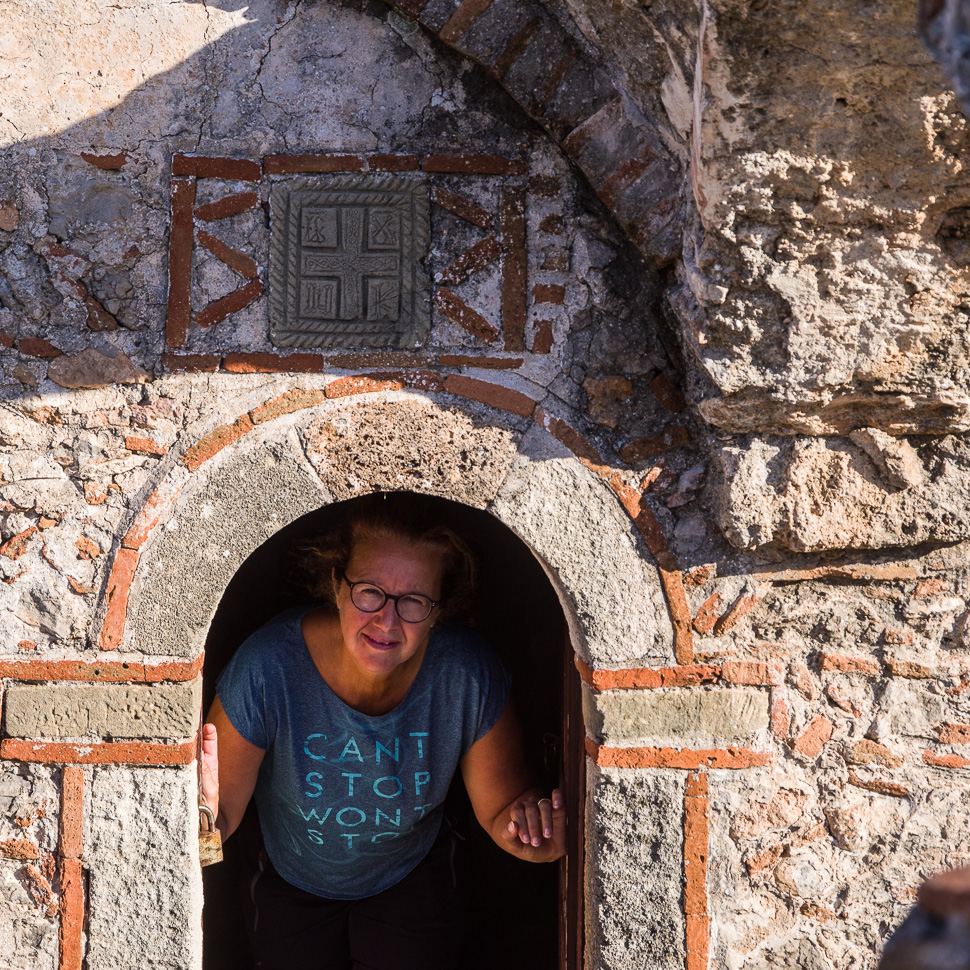 |
| Small entrance to the church |
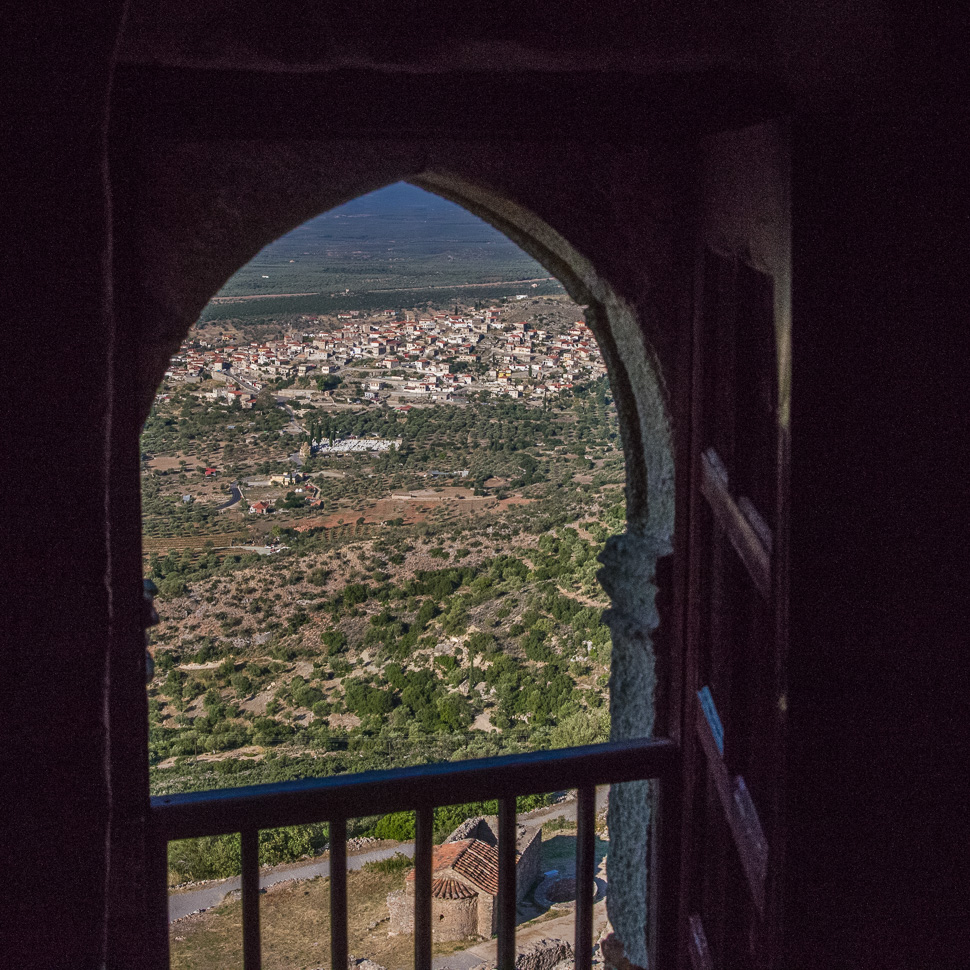 |
| View down to modern Geraki |
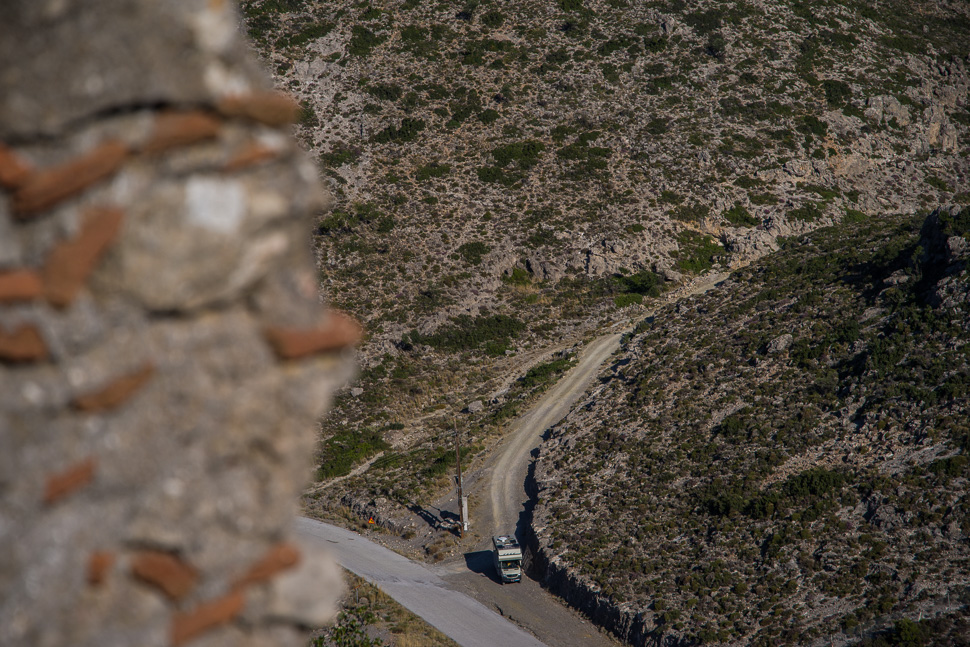 |
| Parking for the night |
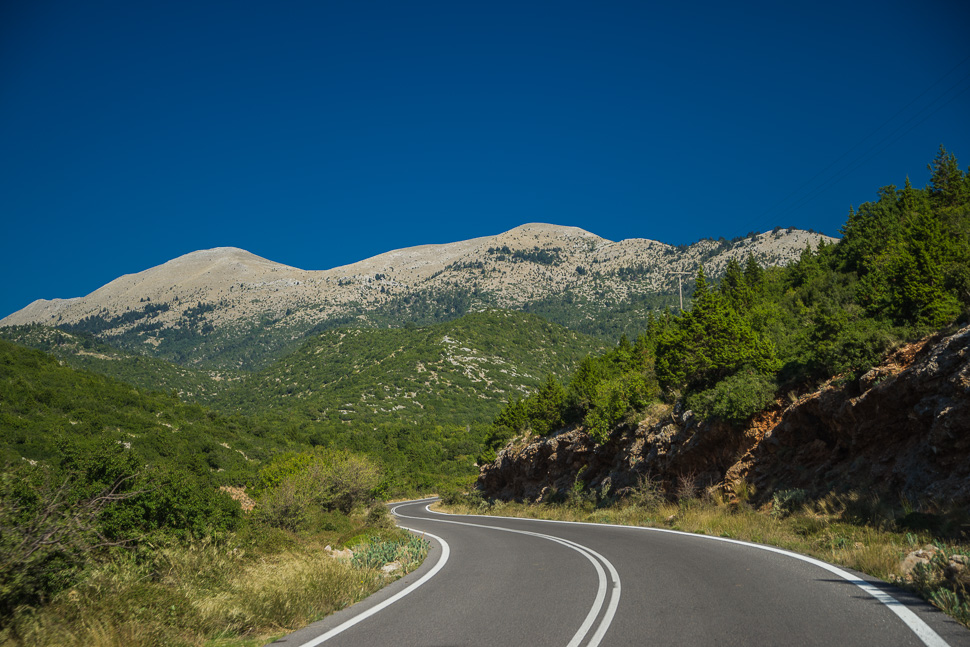 |
| Driving up into the mountains again |
We had stopped at Kosmas, a village in the mountains, for lunch at this restaurant. As usual, the main road leads directly through the centre of the village, past the church and its surrounding restaurants.
As also trucks have to take this route, we assumed that we will fit through as well, but sometimes it just feels too narrow, especially with oncoming traffic.
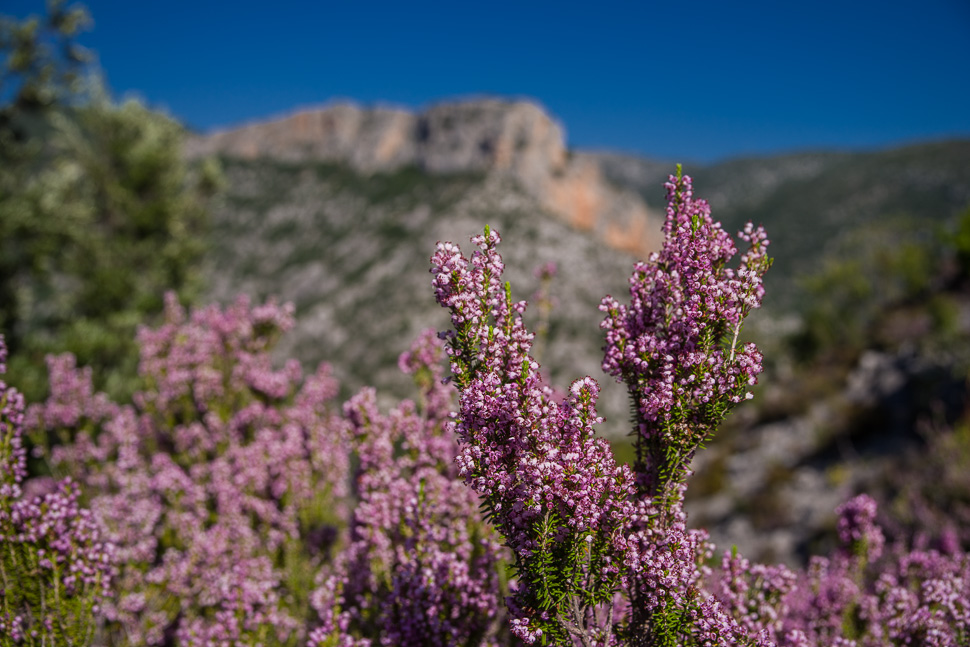 |
| Heather in flower |
On our descent into the spectacular Dafnon valley, we stopped at the monastery of Elona, which seams to be clued to the rock.
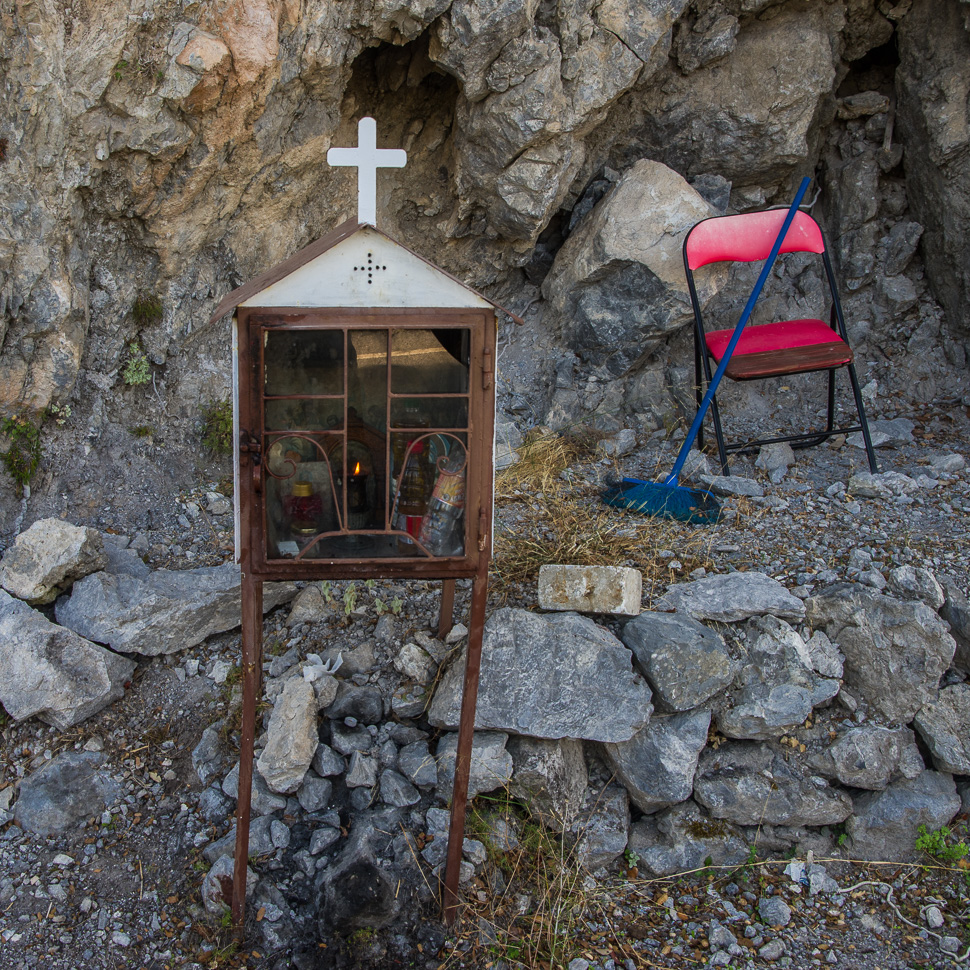 |
| Roadside chapel |
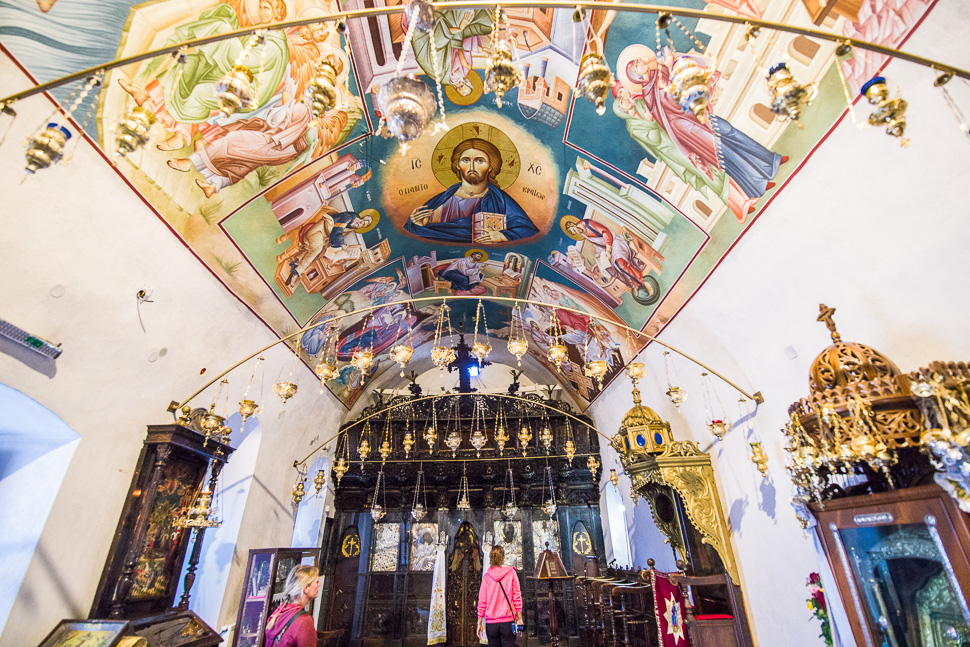 |
| Monastery church |
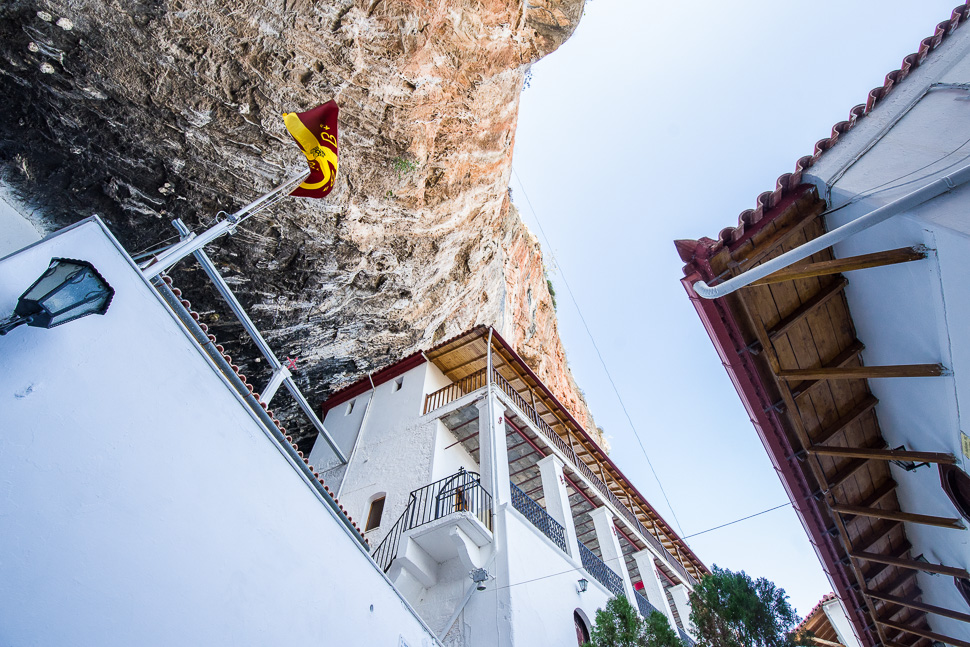 |
| Monastery of Elona built into the cliff |
The history of the monastery begins in 1300. Shepherds saw a light in an inaccessible part of the cliff. This light, according to the legend, emanated from an oil lamp lit in front of an icon of St. Panagia. The bishop commissioned two hermits from the area to settle at the site, where they then built a small monastery with two cells. The present buildings are from the beginning of the 19th century and the nunnery is inhabited by 4 nuns. In 2006 the historic icon of the Panagia was stolen but could be retrieved by the police. The original icon is only presented during the consecration festival in August.


